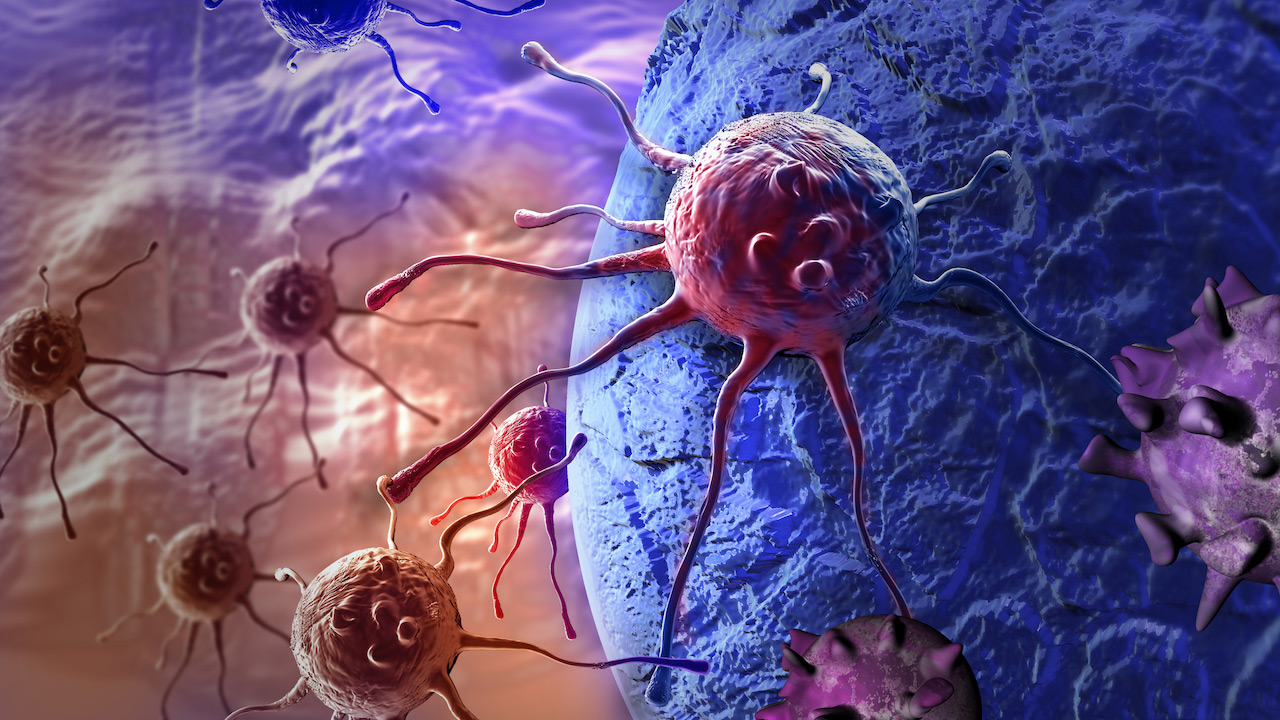Researchers discover that mutations in tumour-halting gene may be useful markers for prognosis
Researchers at Sunnybrook Research Institute (SRI) have found a link between mutations in the tumour-suppressor gene p53 and clinical outcomes in people with cancer. The study is the first to show that mutations of p53 that are more active are associated with longer survival. It suggests a path by which the gene’s mutation status could be used to help determine prognosis and decide which patients need more aggressive treatment.
A working p53 gene stops the formation of tumours. This protein is the most frequently altered gene in human cancers—that much is known. Yet, in the past, when researchers looked at the relationship between p53 mutations and outcomes, results have varied widely because the mutations were studied as a whole. “There’s hundreds of mutations along p53, and they have different outcomes. Currently, [doctors] are treating all those mutations equally in the clinic. What we’ve done is categorized the mutations,” says Nicholas Fischer, a PhD student in the lab of Dr. Jean Gariépy at SRI and lead author of the study.
Fischer and Gariépy leveraged the findings of a 2003 study by Japanese researchers that measured the function of each mutation along the p53 gene. Using this analysis, they compared the activity of p53 mutations of more than 2,000 cancer patients whose clinical data were accessible via online registries. This activity includes the regulation of genes that repair DNA or stop cell growth in response to DNA damage, for example.
They found that people with a p53 mutation that enabled the gene to have even a small amount of activity—up to 5%—lived longer than those who had a mutation that made the gene inactive. They also found that people who are born with p53 mutations in every cell of the body—a hereditary disorder called Li-Fraumeni syndrome, which predisposes people to develop cancer—have drastically different lifespans, depending on their mutation. For example, people with Li-Fraumeni syndrome with a mutation resulting in at least 25% activity lived 20 years longer, on average. The study was published Aug. 9, 2018 in the journal JCI Insight.
“The mutations aren’t always completely deleterious. They sometimes retain some activity to suppress tumour growth. We saw this gradient effect in survival—the higher the transcriptional activity of your mutant p53, then the greater the chances of survival,” says Fischer.
They found stark differences in survival among men with brain and stomach cancer. Men with brain cancer who had a mutation resulting in up to 5% activity of p53 lived 42 months longer than those who had a p53 mutation with no activity. Among men with stomach cancer, the survival of those with a p53 mutation with up to 5% activity was 38 months, versus 16 months for men who had a mutation leading to a completely inoperative gene.
The findings are of particular relevance for the thousands of Canadian men who are diagnosed with these cancers every year, as well as their loved ones. According to the Canadian Cancer Society, in 2017 about 1,700 men were diagnosed with brain and spinal cord cancer, and 2,200 men were diagnosed with stomach cancer.
“It became very clear indeed that the more active p53 is, the more these patients seem to live longer,” says Gariépy, who is a senior scientist in Physical Sciences at SRI. He likens the phenomenon to using a cell phone: “If p53 was a cell phone, even though you’re down to 5% battery, it can do all the functions that p53 would do because it still has battery life. You can phone, but you probably can’t watch video—you have some limitations. That’s what happens—you may develop cancer if you have low activity of p53 versus somebody who has almost 100% battery or full activity of p53. If your battery goes to 0%, you can’t use the cell phone. That’s exactly what’s happening with p53—you have no more activity,” he says.
The researchers put together a table of all clinically known p53 mutations and categorized them according to their activity to help guide prognosis and treatment. People with mutations leading to an idle p53 gene have a poorer survival outlook and might be considered for more aggressive treatment, says Fischer. “With next-generation gene sequencing, these tumours can be sequenced and we can tell directly which mutation [a person has]. People can look at the table and say, ‘OK, that’s the mutation of this patient. It’s not very good in terms of activity, so we’re going to have to check that patient far more closely,’” says Gariépy.
Fischer hopes that the research will refine people’s understanding of what a p53 mutation means so that doctors can tailor therapy to the individual. “Every mutation might mean something different; just because it’s in the same gene, that doesn’t mean it does the same thing,” he says. “I think that’s where the future of genetic testing and cancer has to go. You have to realize what these mutations are doing to the cell’s functions.”



